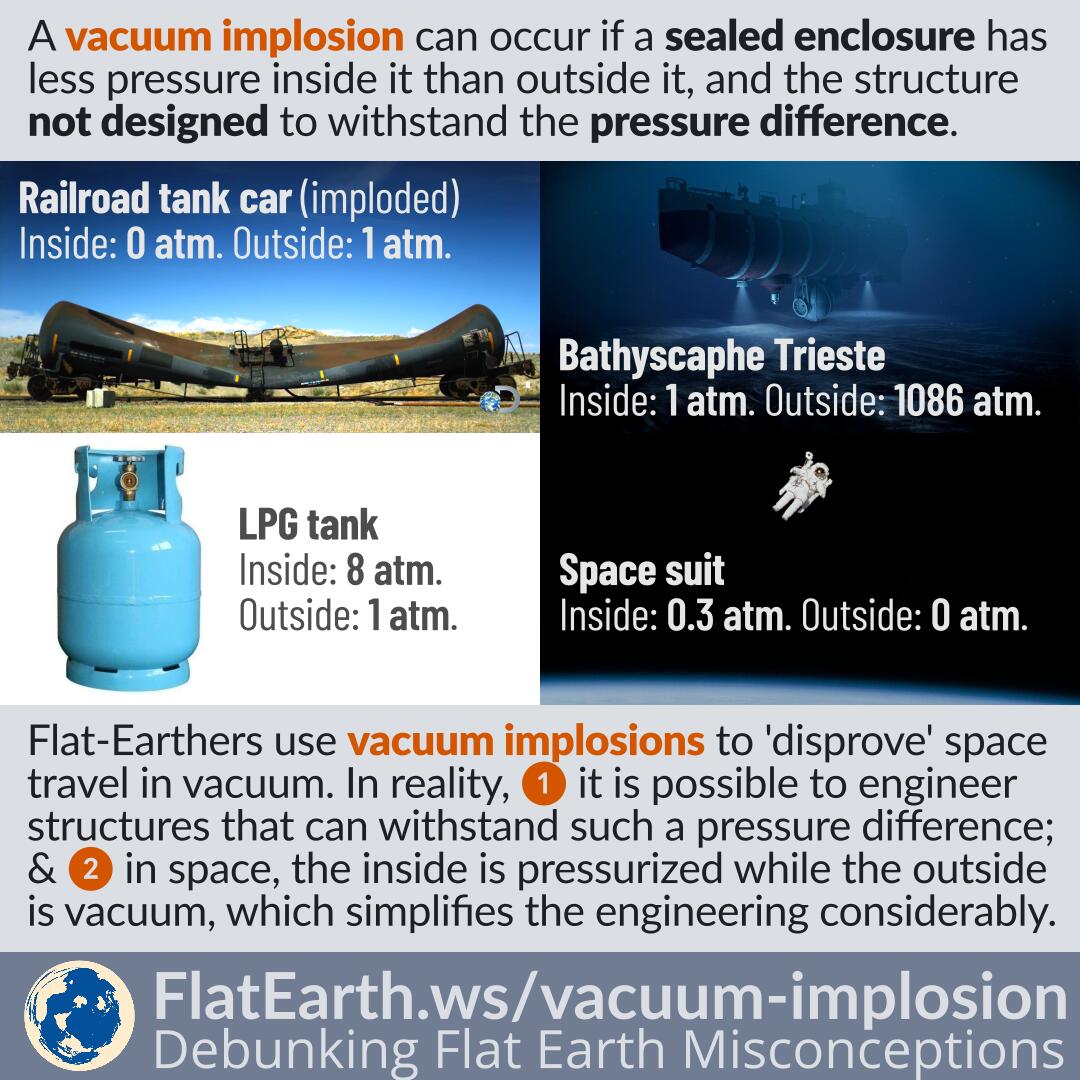A vacuum implosion can occur if a sealed enclosure has less pressure inside it than outside it, and the structure is not designed to withstand the pressure difference.
Flat-Earthers use vacuum implosions to ‘disprove’ space travel in the vacuum of space. In reality, 1. it is possible to engineer structures that can withstand such a pressure difference; and 2. in space, the inside is pressurized while the outside is a vacuum, which simplifies the engineering considerably.
Flat-Earthers discovered that a vacuum implosion could occur on a sealed railroad tank that was made to have a vacuum inside. The inside has the pressure of ~0 atm, while the outside ~1 atm. Because the tank was not engineered to withstand the pressure difference, a vacuum implosion occurs.
However, it is not impossible to engineer an enclosure that can withstand such a pressure difference. An extreme example is the Bathyscaphe Trieste that went to the deepest part of the ocean, the Challenger Deep in the Mariana Trench. The pressure outside is 1086 atm, and as such, the pressure difference is more than 1000× in the case of the imploded railroad tank car.
An LPG cylinder is pressurized about eight times the outside air, but it does not explode. The inside of a spacesuit has a pressure of 0.3 atm, compared to the vacuum of space that has the pressure of zero atm. Considering the pressure differences, it should be easier to engineer a spacesuit compared to the other cases mentioned previously.
As opposed to the cases of railroad tank car & bathyscaphe Trieste, in the cases of LPG cylinders & spacesuits, the pressure inside is higher than the outside. In such cases, it is easier to engineer the enclosure because ripping materials apart requires more force than to bend them. It is easy to demonstrate that using a rope or wire: bending them is considerably easier than to sever them.
References
- LPG Pressure – How Much Pressure in LPG Cylinder – LPG Pressure Relief Valve – Gas Cylinder Pressure – elgas
- Liquefied petroleum gas – Wikipedia
- What is the deepest reach of a military submarine? – Quora
- Bathyscaphe Trieste – Wikipedia
- NASA Spacesuit Page – NASA
- Shear modulus – Wikipedia
- Young’s modulus – Wikipedia


